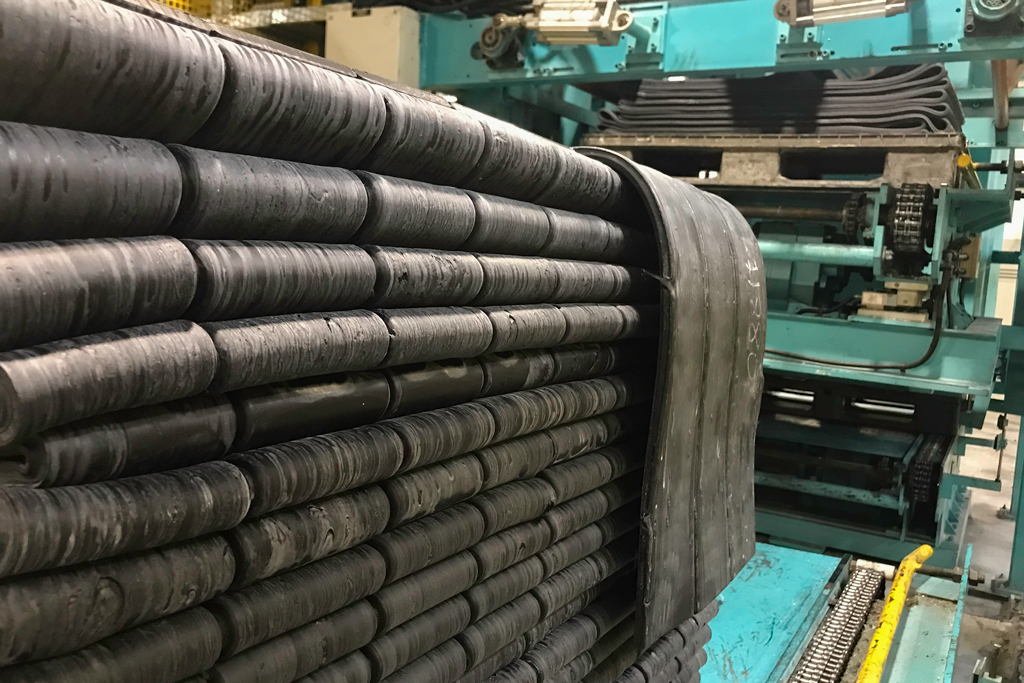How Much Do You Know About Rubber? A Complete Guide from Manufacturing to Application
How Much Do You Know About Rubber? A Complete Guide from Manufacturing to Application
Rubber may seem ordinary, but it plays an essential role in a wide range of applications - from industrial machinery and road safety facilities to green building materials and everyday products. With years of expertise in the industrial rubber manufacturing field, SUN specializes in producing rubber rollers, gaskets, oil seals, as well as road safety products, impact protection barriers, and eco-friendly green boards. So, what makes rubber so unique? How do we choose the right material? And why has it become a key element in industrial and safety applications? Let’s explore.
Characteristics and Types of Rubber
Rubber is known for its excellent elasticity, outstanding cushioning performance, and superior wear resistance. It is widely used in applications requiring vibration resistance, impact absorption, collision protection, sealing, and power transmission. Rubber can be classified into natural rubber (NR) and various synthetic rubbers such as NBR, EPDM, and PU. Each type has specific strengths and limitations depending on temperature conditions, chemical exposure, and abrasion level. Choosing the wrong material can lead to performance issues, reduced lifespan, and potential safety risks.
Applications: From Machinery Transmission to Vehicle Protection
In the field of machinery transmission, rubber rollers, polishing wheels, and oil seals are essential components that enhance equipment efficiency and stability. SUN has accumulated years of R&D and manufacturing capabilities in this area. On the other hand, in road and warehouse logistics safety, rubber is used in parking stops, impact protection barriers, and speed bumps. With its high impact resistance, flexibility, and design versatility, rubber protects vehicles, people, and goods from accidental damage. Recently, SUN launched “Green SUN Board,” an eco-friendly material made from recycled rubber, bringing circular economy concepts into practical material applications.
Key Considerations for Material Selection and Maintenance
When selecting rubber materials, it is crucial to consider the operating environment (e.g., temperature variations, chemical exposure, heavy impacts), required functions (e.g., sealing, wear resistance, shock absorption, load-bearing), and cost-effectiveness. For example, NBR is suitable for oil-resistant transmission environments, while FKM or silicone is recommended for high-temperature and corrosive conditions. For road safety barriers requiring light weight, high impact resistance, and anti-slip properties, modified rubber or PU composites are ideal. Regular inspections for hardening, cracking, discoloration, or unusual sounds are also essential to maintain performance and safety.
Why Choosing Rubber = Choosing Safety and Efficiency
Thanks to its elasticity and durability, rubber performs exceptionally well in high-impact or heavy-load environments. It can be designed into various modules and customized according to specific customer needs. In warehouse logistics or vehicle-intensive areas, using rubber protection systems can significantly reduce maintenance costs, enhance operational safety, and improve overall efficiency. SUN integrates manufacturing, design, marketing, and service to transform rubber’s inherent advantages into tangible value, supporting the industrial and safety sectors to upgrade together.


